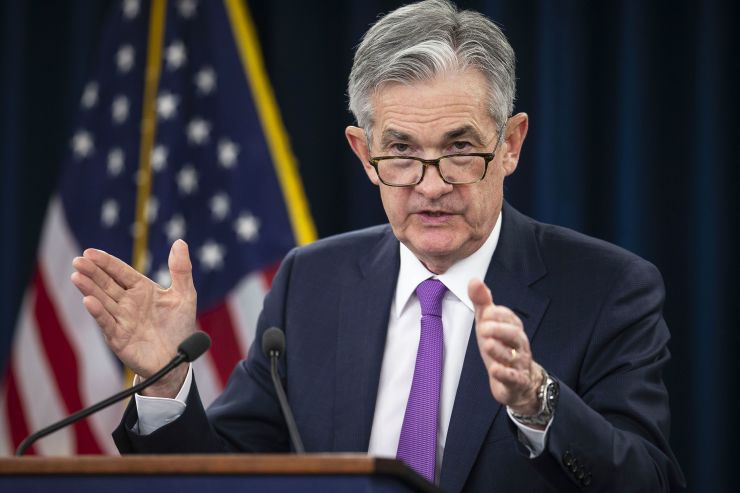
The Fed’s meeting is the big deal for markets in the coming week, and it is widely expected to send a message that investors in both bonds and stocks could find bullish.
But analysts in both markets say the Fed’s message has been well telegraphed, and market response could be tepid or even a “sell the news” reaction.
The key for both markets will be what the economic data shows, after a series of weak reports. Thursday’s regional Philadelphia Fed survey and PMI data Friday on manufacturing and the services sectors will be important. Existing home sales are also released Thursday.
“The first quarter has not exactly been a hallelujah quarter, and the Fed has to acknowledge that,” said Diane Swonk, chief economist at Grant Thornton.
The Fed is expected to hold interest rates steady, but it is also expected to issue a new forecast with fewer rate hikes and a slower economy. The Fed also is likely to announce the end of its operation to unwind its balance sheet, but economists are divided on which month this year it will actually end the program.
Stocks surged in the past week with the best performance since November for the S&P 500, which ended up 2.9 percent. At the same time Treasury yields, which move opposite price, continued to fall. The bench mark 10-year Treasury slipped below 2.60 percent Friday, its lowest yield since June 4, and the 2-year was at 2.43 percent.
The fact that both markets are rising at the same time is somewhat unusual, and at some point the trend could break in favor of one market versus the other.
An easier Federal Reserve, meaning one less inclined to drive up rates, is viewed as a positive for stocks because higher interest rates can slow the economy and send borrowing costs higher for companies and investors. Bond yields also head lower when the Fed is not likely to raise interest rates.
“This could be an interesting week,” said Art Hogan, chief market strategist at National Securities. He said it should be positive for stocks if the Fed reduces its forecast for rate hikes and delivers on expectations.
“This is the meeting where we get more clarity on the balance sheet reduction. Both those things would be an affirmation of where things are right now. It’s also technical…where we close [on the S&P] puts us on a precipice of breaking out,” said Hogan.
The S&P 500 closed at 2,822, near the key 2,825 level which is the upper end of a big band of resistance. “The only down week of the year was the week before this, and the trend has been higher,” he said.
But Paul Christopher, Wells Fargo Investment Institute chief international investment strategist, said the stock market could actually have little reaction to the Fed because Fed officials have been very dovish in public comments.
“It could be neutral or perhaps even negative. What more can they say? You might see some people selling the fact,” he said. Christopher said he sees the market as stretched, and it could sell off. But then, there could be a buying opportunity.
“We think stocks have to start to feel better about the economy first,” he said, adding a trade deal with China could be a positive.
The Fed’s actions could also already be priced into the bond market, according to George Goncalves, head of fixed income strategy at Nomura. He said what really matters is what risk markets, or stocks, do in response.
“There’s scope for risk to do better and the Fed’s not hiking. You can see it rally into the summer and the economy will look better and if that happens that will be a buying opportunity for rates,” he said.
Economists see the Fed reducing its forecast for two rate hikes to one or even none for this year. They also expect it to say it will end its program to reduce the balance sheet, but they don’t agree on whether that happens in June, September or closer to the end of the year.
The Fed is currently reducing its balance sheet by allowing securities to roll down as they mature, instead of replacing all of them as it previously did. It now theoretically could allow $60 billion a month to roll off, but Fed officials could change that program and begin to repurchase securities to replace them.
The markets are also waiting to hear if the Fed will focus solely on Treasury securities, and at what part of the curve – or duration. In the past it had purchased mortgages but is expected to discontinue that.
“We think they’re back to buying Treasurys by Oct. 1. Somethings got to give. At some point, its either that [bond market] people are too pessimistic and the economy is going to do well because the Fed is behind the curve, or we have another kind of correction on our hands in the next six to nine months,” he said. “We just have to pass through time There’s a powerful faith-based system around easy money can fix all things.”
Swonk said she expects the Fed to continue to forecast one rate hike for this year. The Fed interest rate forecasts appear as anonymous dots from individual Fed officials on a chart, known as the “dot plot.”
Even so, she doesn’t expect the Fed will actually raise rates but it will continue to give itself flexibility. Economic data has been mixed with some very poor reports, like December’s retail sales, which fell 1.6 percent, and February’s jobs report, which showed job growth of just 20,000 jobs, 160,000 below forecast.
“I think they have to walk a fine line between acknowledging the weakness we’ve seen and then also show that we’re still going to see growth this year,” she said.























